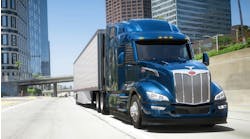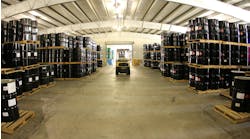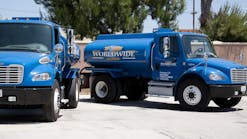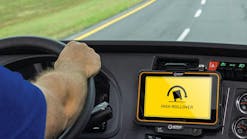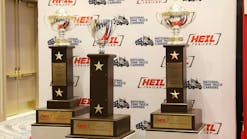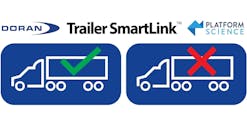The Federal Motor Carrier Safety Administration is considering tweaking ELD regulations, and trucking stakeholders are split as to whether changes would clarify points of confusion or further complicate already contentious rules. In a notice published in the Federal Register, the FMCSA sought comments concerning the ELD certification process, the pre-2000 engine exception, and whether certain issued guidances should be codified into regulation.
ELD certification
One of the main issues the FMCSA has raised is if a centralized body to certify ELDs should be established, whether that organization is established within the FMCSA or outsourced to a third party. This is a question that federal rule makers pondered back in 2015 during the initial rule. ELD providers have to self-certify that their technology meets FMCSA requirements before being added to the list of registered ELDs. Providers then must notify FMCSA of any major updates to the device.
The question is not only if a centralized certification process would result in greater compliance but whether it would be more or less of a burden for the government to verify ELDs beforehand or chase down vendors after they’ve self-certified.
P. Sean Garney, co-director of Scopelitis Transportation Consulting, gave the example of a carrier contacting the FMCSA about a problem or discrepancy they have with their ELD data. The FMCSA must then send investigators to determine if the ELD is compliant, then follow up with the provider, which may result in a protracted back-and-forth.
“It’s very difficult for [FMCSA] to keep up, especially with so many certified devices out there,” Garney said.
The FMCSA could model its certification process after an example from the Great White North. Canada requires ELDs to be verified by one of three certification bodies accredited by its Minister of Transport. The ELDs are then recertified annually. However, Canada has 25 providers for 57 devices. The U.S. has 834 devices on its list.
It would be the responsibility of carriers traveling through the Canadian-American border would have to check the registered ELD lists in both countries to ensure their devices are approved in both.
There is also the concern that having to wait on FMCSA’s approval instead of relying on self-certification would increase wait times for device approval, delaying how soon an ELD could get to market and earn revenue. FMCSA is also considering requiring providers to confirm ELD information on an annual basis.
"It certainly would be a very onerous process for ELD vendors,” Garney said. “I think some of the smaller ELD vendors might not survive that process.”
There have been ELDs that have been removed from the list, but those are few and far between.
David Heller, SVP of safety and government affairs for the Truckload Carriers Association, said, “The third-party certification certainly does check all the bells and whistles on these devices and ensures that they are designed to the specs in which the mandate has been written.”
Pre-2000 engine exception
Another rule up for review is the exception for vehicles manufactured before 2000. Many of those vehicles have dated electronic-control modules that can’t relay all the information an ELD requires, so they are exempted from needing an ELD. However, FMCSA states that many vehicles with pre-2000 engines and most with rebuilt pre-2000 engines have ECMs that could accommodate ELDs, and the agency is considering rewriting that exception.
Heller acknowledged the need for flexibility in applying the mandate but said fewer exemptions cause less confusion.
“As an industry, we are better off with a one-size rule that applies to everybody. Sometimes the confusion often lies with exemptions,” he said.
Codifying FMCSA guidance for drivers
FMCSA lists guidances for drivers, but those guidances are not written into regulation. The agency is considering codifying these rules for increased clarity.
For example, regulations require drivers to switch to paper logs when an ELD malfunctions. FMCSA has specific definitions of what a malfunction is, but it has also issued guidance that drivers should continue to use an ELD in the case of malfunction as long as hours of service data is still being accurately recorded.
The Oregon Department of Transportation commented that “it is often difficult to determine which [malfunction] codes represent legitimate malfunctions,” and FMCSA should offer guidance, “which codes represent legitimate malfunctions requiring production of paper logs.”
Another exemption that is being considered for codification is the use of trucks in the yard. On Oct. 20, 2017, FMCSA granted a five-year exemption to UPS that allows it and other carriers to use trucks in a yard-move mode, where ELDs do not record hours of service in a geofenced area as long as the truck doesn’t exceed 20 mph. This exemption was extended by five years on Oct. 26, 2022, with FMCSA stating, “The Agency has determined that renewal of the temporary exemption would not have an adverse impact on safety, and that a level of safety equivalent to or greater than that provided by the regulation would be maintained.”
American Trucking Associations commented, “FMCSA should add the [yard-move] exemption to the regulation. ATA members…do not believe it has an adverse impact on safety.”
The trucking industry will have to wait until FMCSA decides what changes, if any, it will make. The ELD rule, being only a few years old, will likely be reviewed many times.
“This is the beginning of a long rule-making process that’s likely to be measured closer to years than in months or weeks,” Garney said. “I think this is a good omen for the industry that FMCSA is taking a look at this and saying, ‘Hey, we’ve learned a lot in the past four years, five years, and it’s time to look back at our rules and make sure that they’re appropriate.’”
Heller echoed Garney’s positive outlook, saying, “I think it shows that we’ve come a long way from issuing one rule and forgetting it. This is an opportunity to make a rule that we as an industry are working with and make that rule better,” Heller said.
This article originally appeared on FleetOwner.com.
